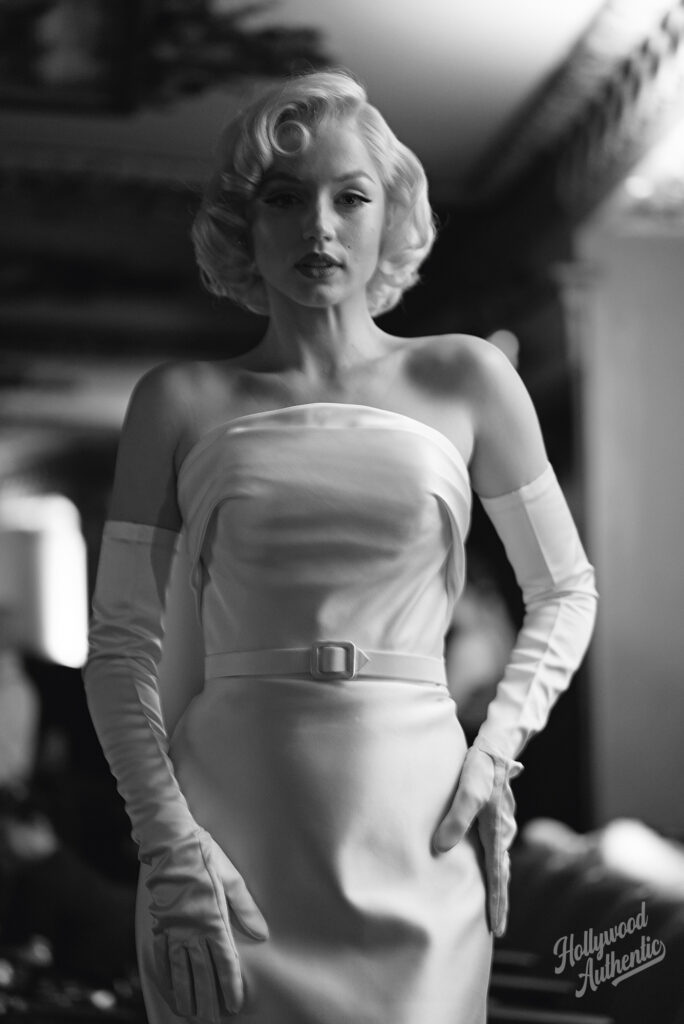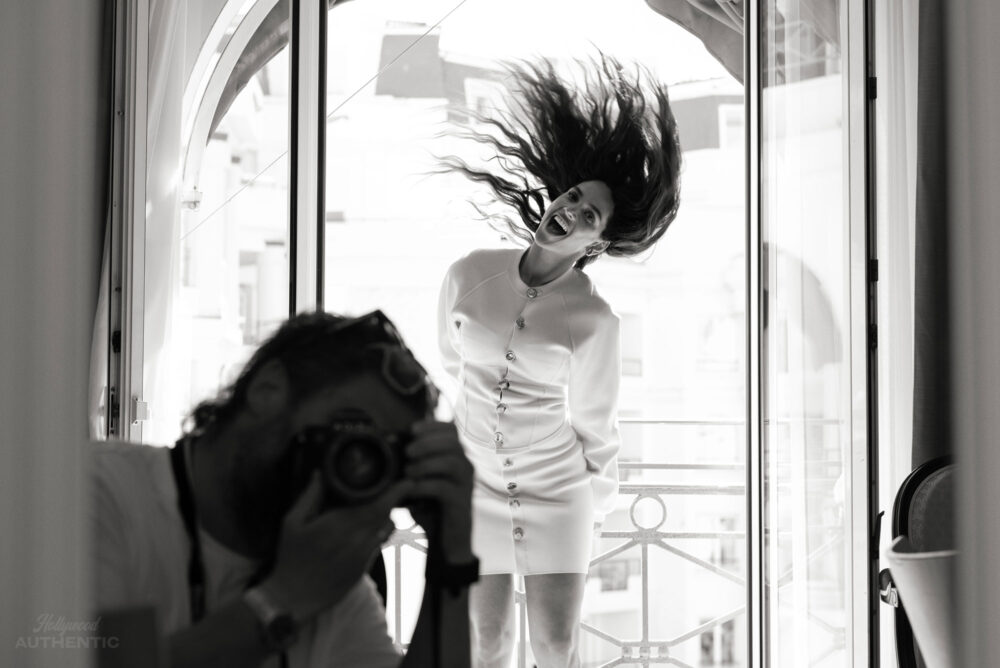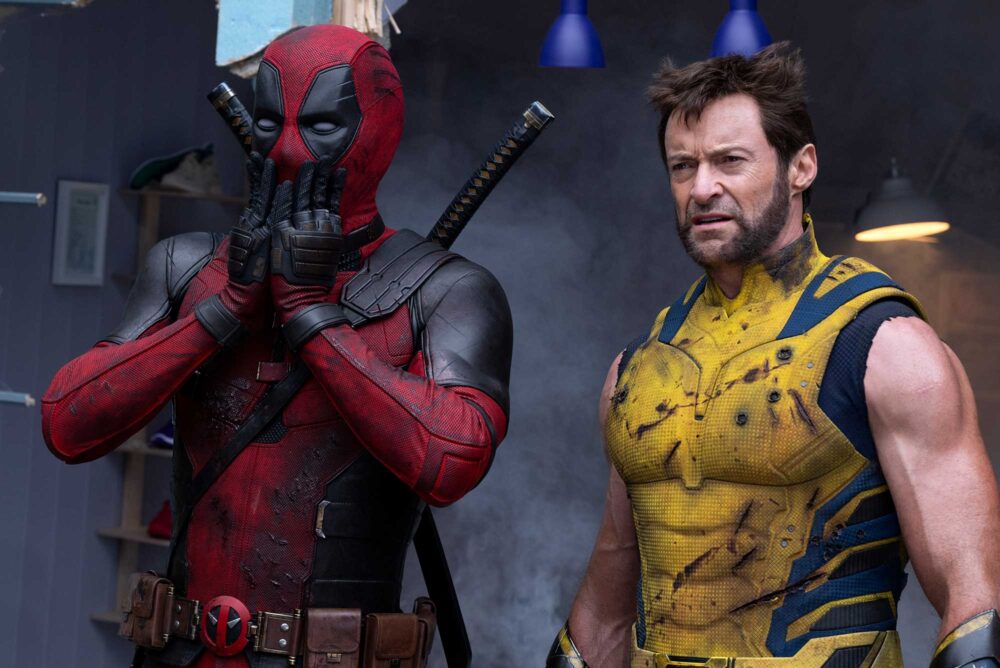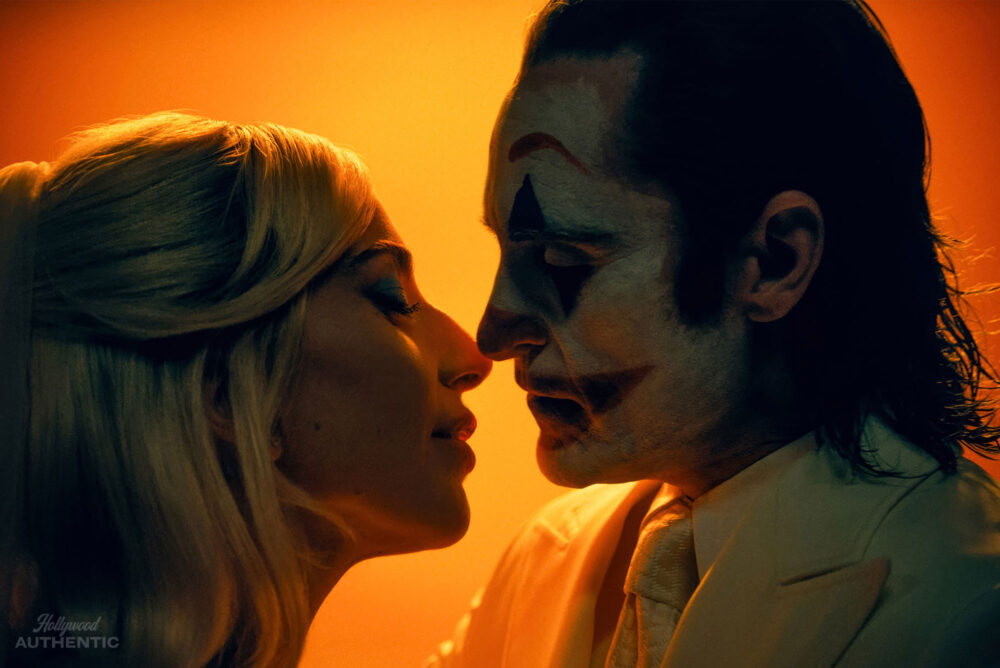GREG WILLIAMS: ANA AND ANDREW
I first met Ana in 2016 at the Cannes premiere of a movie called Hands of Stone, which was about the Panamanian boxer Roberto Duran, in which she played Felicidad Iglesias, the fighter’s wife. She did not speak English then. Fast forward to 2022 and the world premiere of Andrew Dominik’s film Blonde in Venice, in which she portrays Marilyn Monroe, and she is now fluent in the language. I think Blonde is an extraordinary film and Ana is extraordinary in it. She is Cuban, of Spanish heritage, not perhaps everybody’s first choice for Marilyn Monroe, but she absolutely owns the part.

Ana came to many people’s attention in Blade Runner 2049 as the VR love interest, Joi, and then in Knives Out with Daniel Craig, but the world really sat up and took notice when she put in a scene-stealing performance opposite James Bond himself, playing the Cuban/CIA spy Paloma in No Time to Die. (I thought I could detect a similarity between Paloma in Bond and her Marilyn in Blonde. I was lucky enough to have been on both sets, and I thought there was a Monroe-ish ditziness about Paloma when she first appears on screen that completely evaporates when she explodes into action. You can read Ana’s reaction to this theory below.)
Those who hadn’t been paying attention hailed her as an exciting newcomer when they saw her performance as Paloma, but she had enjoyed a lengthy career before that, with three films in Cuba before she moved to Madrid when she was 18, where she starred in a teen TV drama and made more movies. Eventually, in her mid-20s, she decided to head for Los Angeles, where she made a further 15 films (learning her lines phonetically for the first few until her English lessons paid off) before shooting Blonde for director Andrew Dominik (Chopper, The Assassination of Jesse James by the Coward Robert Ford, Killing Them Softly, Mindhunter).
Andrew became a friend of mine in the 12 months leading up to the film’s release. He visited us at our house in LA several times, and when we got to Venice for the premiere of the movie, we hung out for four or five days and we swam together every day and shared each other’s meals (incidentally, he’s a really good swimmer). On the way to the premiere screening, I asked him what his next job was and he said there was nothing concrete on the table. Blonde had dominated his life for so long, he hadn’t been able to think beyond its completion and release. But he said that having an empty slate felt like ‘freedom’ now that the movie was finally out in the world.
The conversations recorded below were conducted in Venice, where Blonde – and Ana – received a 14-minute standing ovation. This had effectively been 14 years in the making, the length of time that had elapsed since Andrew first optioned Joyce Carol Oates’ source novel.
ANDREW DOMINIK: FINDING ANA
The big problem in making a movie about Marilyn Monroe is: who is going to play Marilyn? She is the kind of person where it doesn’t matter what the film is supposed to be about, it’ll be about her. Look at The Misfits [her last completed film, directed by John Huston, with Clark Gable and Montgomery Clift]. In Arthur Miller’s script, she’s supposed to represent a guiding star to these broken men. She’s sort of bringing them back to life. But really what’s happening on screen is that she’s a pilled-out chick in a desperate situation and there’s three creepy dudes trying to fuck her. Because with Marilyn, it doesn’t matter what the movie is supposed to be about, it becomes about the actual situation in real life. So, for Marilyn, you need an actor who, when they’re on screen, the viewer doesn’t care about anything else. They must be like the sun around which everything else revolves. And it’s a tall order to find a person who has that magnetism and charisma and who also happens to look like Marilyn Monroe. Not just a look-a-like, but someone you could believe as her and understand what the fuss has been about over the decades.
Why did I choose Ana? It was love at first sight. I first saw her in a movie called Knock Knock. It was her debut Hollywood film. She played one of two young women who invade Keanu Reeves’ home and terrorise him. It was an instant thing. I just thought: you know, that girl could play Marilyn Monroe in Blonde.
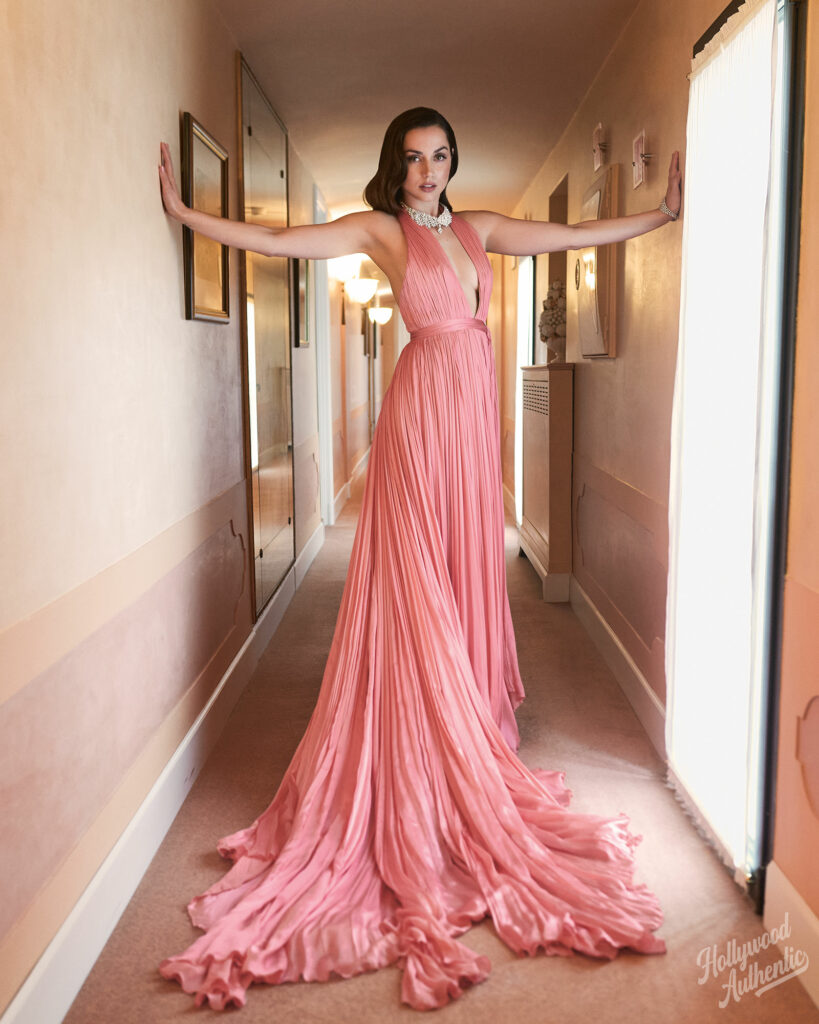
I had already been working on making a movie of the Joyce Carol Oates novel [also called Blonde, and which the author called “a fictitious biography” of Norma Jeane Baker/Marilyn Monroe] for quite a few years. The option had come and gone a few times. In fact, Joyce gave me like a free option on the book, but I still had to pay dues because Blonde is a remake of a CBS TV miniseries from 2001, which most people don’t realise. So, I had to do a deal with both Joyce and the producers of that TV show as well.
Then, when I finally met Ana, she looked nothing like her evil schoolgirl in Knock Knock. But, you know, it was a pretty easy decision to cast her. Once you’ve seen her actually do a scene, you realise she’s got a kind of emotional forcefield that radiates from her. And she can just infect you with it. Whatever Ana feels, you feel too. She traffics in feeling. And that’s what makes her so compelling.
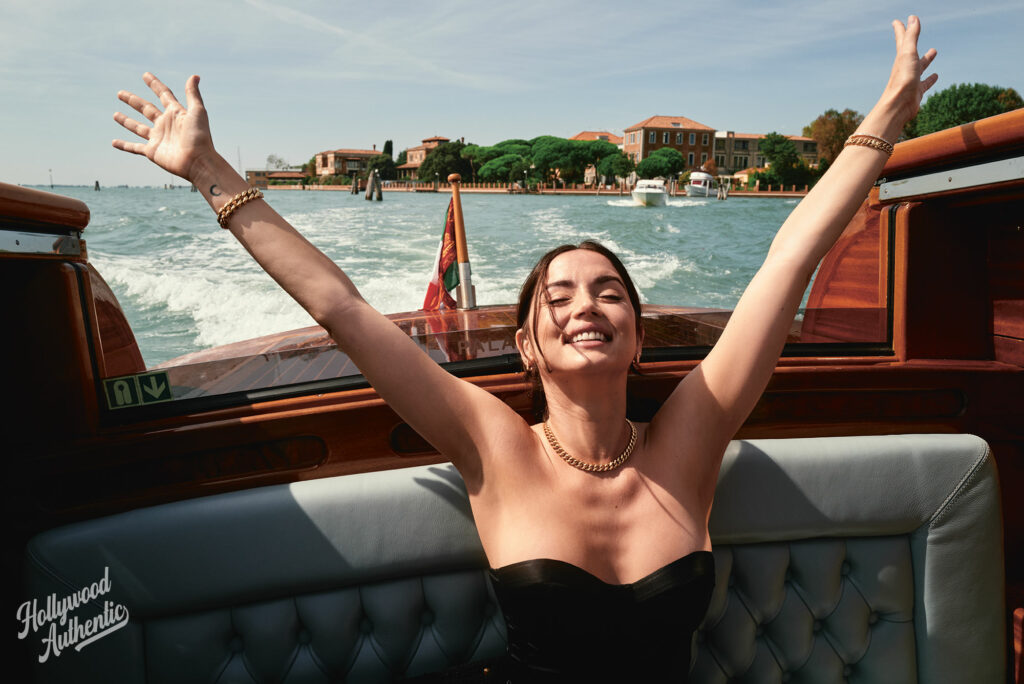
Also, one thing I really admire about Ana is that on set she will always make the space that she needs. I shall give you an example. It was only the second day of the shoot. I already knew she was good, but obviously we were still finding our feet on set. That day she had to do a scene where Marilyn sees her mother for the first time in 10 years. And Ana has to walk in and burst into tears. So, it’s the first take and she comes in and it’s just unbelievable. She just explodes with emotion, and I just wasn’t expecting that intensity. Not on the second day of the film. I couldn’t believe it – it was more than I could have hoped for.
But then it turns out the camera operator blew the shot. And I’m like, sorry Ana, you know, we have got to do it again. So, like the pro she is, she says, OK, and she goes back and she does a second take. And it’s really good. However, it’s not as good as the first time. But before I can even say that to her, before I can even get those words out of my mouth, she’s already saying: I want another one. All right, so we roll again. You have to understand that it’s a really, really high-pressure situation because of that unusable first take. Now we have an OK second take in the can, but we all know that isn’t what the scene could be. So, there is tension in the room and she has got to deal with that and produce all this emotion for a third time.
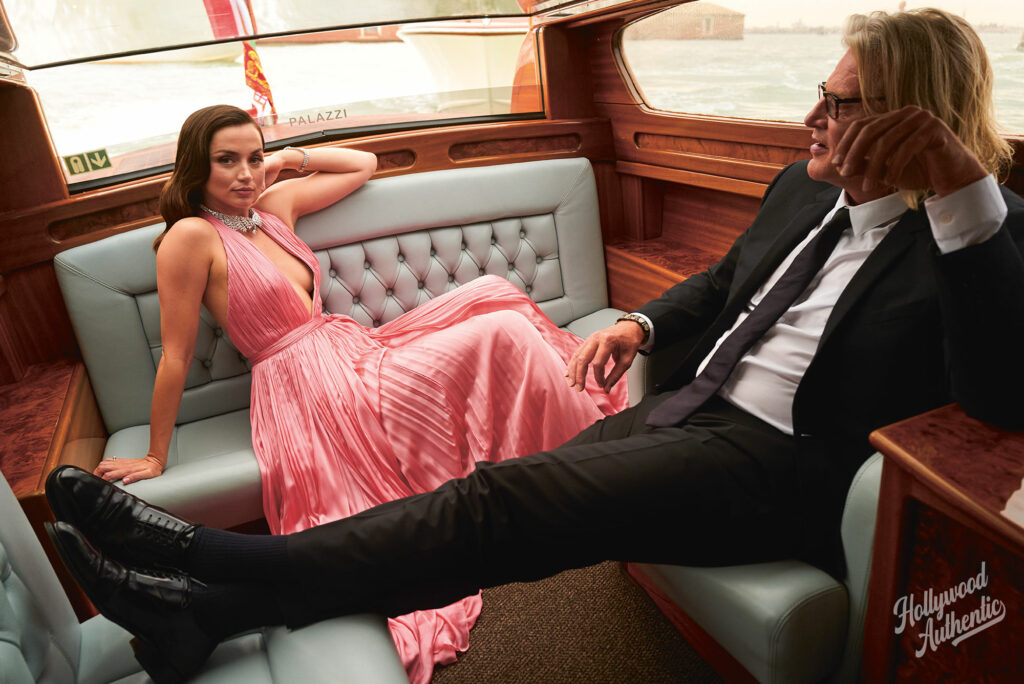
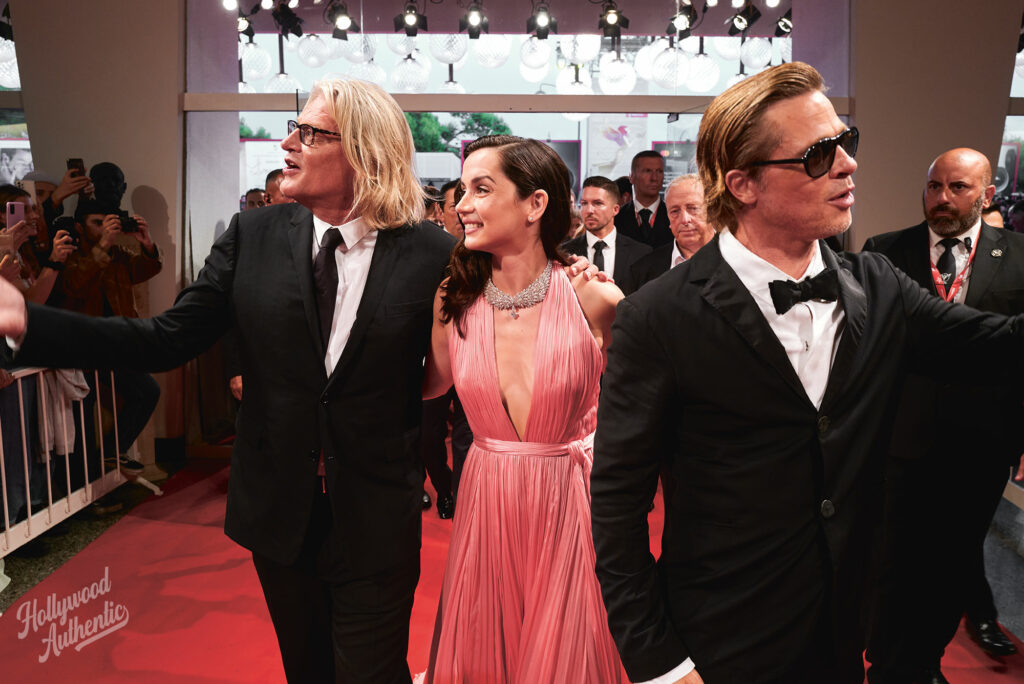
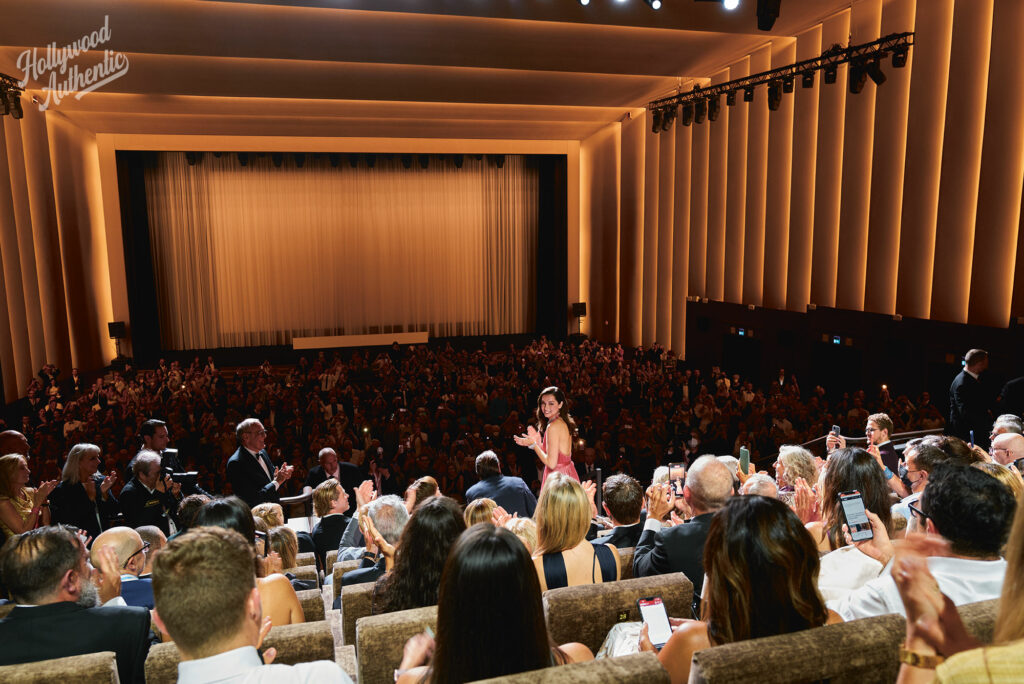

Ana leaves the room. We can’t see her. She has gone back to her mark outside and we’re just looking at this empty space. This goes on for about 60 seconds, which is an eternity when you’re waiting for a take. Then, after what seems like an age, she reappears and she just stops at the entrance to the room. She stands in the doorway, and she just stares the whole room down. Then she walks back to her mark. And then it’s another 60 long seconds and that tension is at absolute fever pitch.
And then she goes, and she does the take which is in the final film, and it’s so moving that when I was watching, a teardrop rolled down my face and hit the monitor. And that’s what I mean about making the space. She’s not going to let anybody else get in the way. She’ll take what she needs to make that performance work and she’ll put pressure on herself if that’s what she needs to do. She is going to make the whole thing be about her, which is what actors should do. It is just really admirable and I fell in love with her all over again.
The other thing you need to appreciate about Ana is that she’s always right. Occasionally on Blonde, various departments would complain about her being difficult, right? She’s doing this and doing that and it’s not what we wanted or agreed. So, then they’d send me in there to talk some sense into her. And I’d walk into her trailer, and she’d say: Andrew, look at this, don’t you think this works better this way? And it did. She was always right.
I think other people didn’t appreciate that she had been around movie sets for a long time, she knows how they work. As far as the English-speaking world is concerned, she seems like she’s a new thing. But Ana has been working professionally since she was a teenager. So, despite her age, she’s really an industry veteran. She’s also got the instinctive feel for where the weaknesses are in a script or on a shoot and where the strengths are. She’s just a real pro.
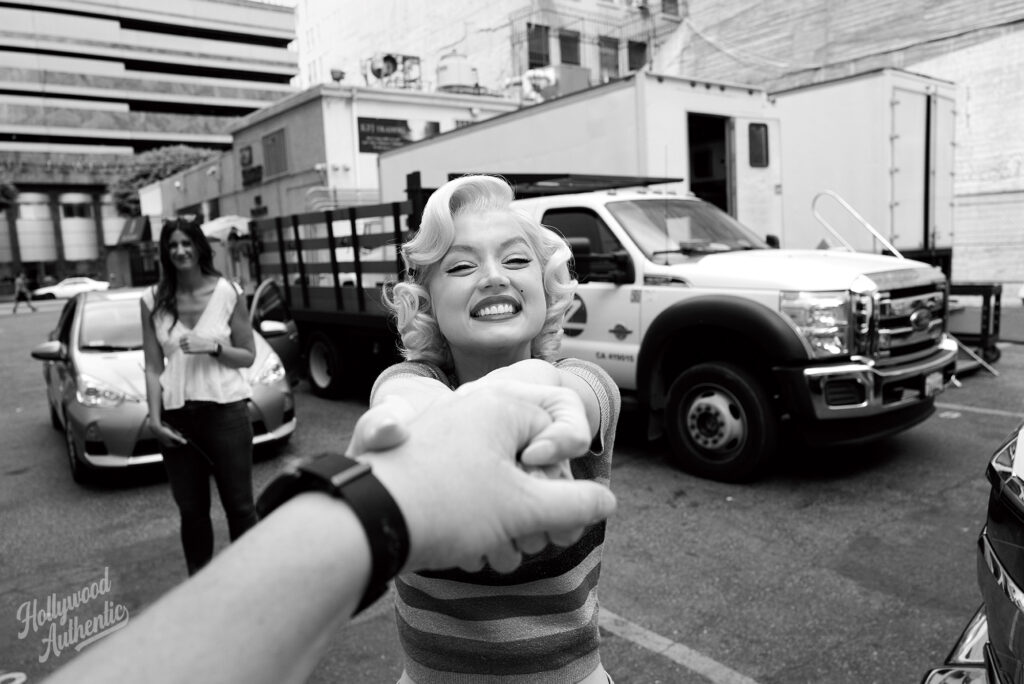
ANA DE ARMAS: BECOMING MARILYN
I left Cuba to live in Spain when I had already done three films. It was a country I always heard a lot about, from my grandparents and wider family. It was always, Spain, Spain, Spain. So, from a young age, I was always curious about it. And, yes, there was ambition involved. I wanted to go out and do more than just Cuban films. Plus, two of my first films in Cuba were Spanish productions, so it made sense to go to Madrid, not least because of the shared language. When I first met Greg in 2016 on the set of Hands of Stone, I really couldn’t speak any English at all and then, a few years later, I am cast as Marilyn, an American icon. Looking back, it seems bananas.
I came to the project about three years ago. Andrew, of course, had been on it much longer. Fourteen years? At least 11 years before he met me. Just think of the passion and the conviction that you need to pursue something like that, to have to fight so hard for a project you believe in for 14 years. That’s not a joke. Most people give up way, way sooner than that. But he felt this movie deep inside. He had to tell the story and he knew that he had to tell it in the way he did in the final movie and it’s incredible.
Andrew, he is a great director of actors. Even though we were dealing with a very specific character – Marilyn Monroe – he gave me so much freedom to do whatever I wanted. He trusted me. We just really, really bonded. We created an incredible friendship, and we ended up feeling so comfortable with each other. We talked about everything to do with Marilyn and fame and we got to love her and this movie. We like and we respect each other and I think we both believe in each other. And the film.
One thing is for certain – if it wasn’t for Andrew, I would never have been in this movie, I would never have got to play Marilyn. I don’t think another director would have thought of me for the role. Nobody but Andrew would have taken the risk. I think it shows how progressive his thinking is, that he could see Marilyn in this Cuban actor and he wanted her for the part. I quickly learned that Andrew doesn’t compromise on anything. He just wants to do what’s best for the movie.
And we owe a lot to Brad Pitt that it got made. Andrew claims Brad worked harder as producer on this movie than on any of the films they’d made together that he’d starred in, and the stories I heard back that up. He was always in meetings, he always had Andrew’s back, he really pushed for the film, always trying to get people to give us more money. He did exactly what a producer should do.
*

Of course, my first task when we finally got the green light for Blonde was to research Marilyn. To try and get inside this woman’s head. I wasn’t even certain the part was right for me, to be honest. In the beginning, I thought I would be dealing with someone completely different from me. That Marilyn and I were from completely separate worlds and very different times and environments. As time went on, I found we had a lot of things in common and that there were unexpected parallels between our lives. With a lot of the emotions that hit me when I least expected it, I realised I could connect with [them] from my own experiences.
It was partly about her being a woman in what was a very exploitative environment, trying to make people take you seriously as an actor. I can relate to that. In many ways it hasn’t changed. The industry still puts you in a particular box and those are the type of roles you have to deliver. But those limitations don’t interest me that much. I don’t want to be in a box and I think Marilyn was really smart, she knew how the business worked, and she tried to get out of her box. I think she was ambitious and wanted to do better work, to grow as an actress. That’s an effort I am familiar with.
But also, we had common memories and feelings from childhood. Such as the ideas that you form about your parents on how you want to make them proud and, you know, how they love you when you’re a kid and how that love evolves and how your relationship with your parents changes once you are an adult. While we were filming, I filled my trailer with photographs of Marilyn from every stage of her career. They were up on the walls as reminders of emotions, of her state of mind at a particular point in her life. Because she was, of course, very expressive. You could see what she was thinking just by looking at her face. I think we found a suitable image for every scene we shot – there was always a picture I could go back to and see what she was going through.
So, eventually, I realised after all my investigations and research and talking to Andrew about Marilyn and all the rehearsals we did, that I was more in touch with this character than I thought. And when we started shooting on day one, I didn’t think about it anymore. When Andrew said ‘action’, I was just “on” as her and that ran until the last day. I didn’t question myself any longer about whether I was the right Marilyn or not. Not once in nine weeks.
It’s a movie about Norma Jeane, who hasn’t really been seen since Marilyn Monroe came into existence. I think once the filming was done, there was a feeling of rest, of letting go. And then, we had finished, and I had to say goodbye to her and it was off to film No Time to Die.
*


Greg Williams asked me if there was a crossover between Blonde and Bond. That he saw a little of Marilyn in Paloma the CIA agent. Well, what happened was this. I was scheduled to shoot No Time to Die and then Blonde, but my schedule changed because we had to wait for Daniel [Craig] to recover from an injury before we could do our action scenes, so the Cuban part was pushed back to the very end of shooting the movie. Which meant I had to do Blonde first. There were two days between finishing that film and starting on Bond, so there is no question some of Marilyn informed Paloma. It wasn’t a conscious choice. I think it just happened because I didn’t really have time to say a proper goodbye to Marilyn. I was suddenly on the plane, right to London and I was Paloma. I think the combination of characters just happened naturally. I was really happy, though, because it felt like Paloma was a Cuban version of Marilyn.
*
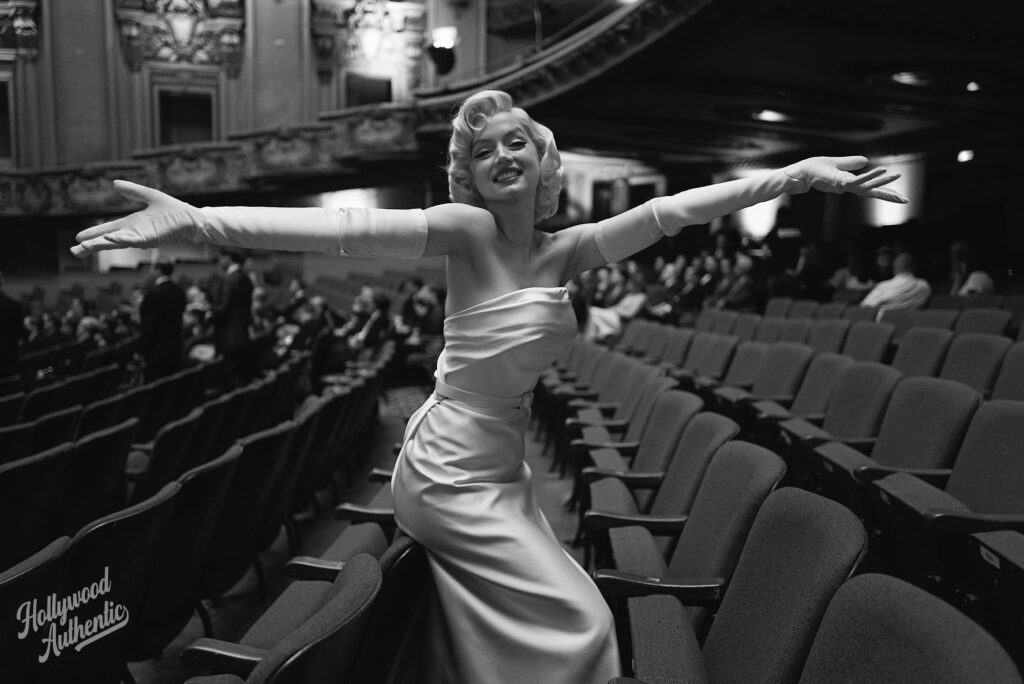
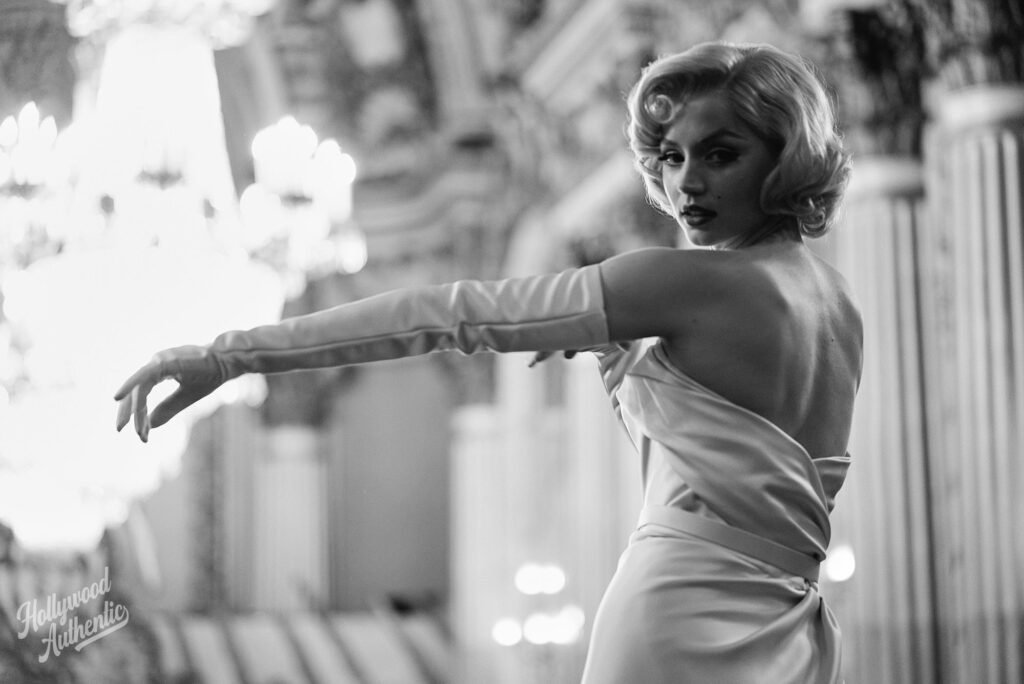
I was very nervous before the premiere. But in a good way. Good nerves. I had seen the film lots of times, but never on a big screen and never with a crowd of other people. And afterwards I was like: what just happened? It was beautiful and magical. It was a whole new experience watching it like that. I saw new places and new scenes and could really admire the work and the energy of the other actors around me. I sat next to Adrien [Brody] at the screening, and he was crying and I told him to stop it, and he said: ‘I can’t.’ Then I started sobbing and he said to stop, and I said: ‘I can’t.’ And then there was that ovation, my goodness, what a night.
I think truly I am most happy for Andrew. I feel, given all the delays and things that happened with the movie and the scary moments, that Blonde couldn’t have arrived at a better time. I mean, we thought that maybe this movie would never come out. Yet it somehow worked out to be the perfect place, the perfect year, the perfect moment. And I feel like I sat with this movie for so long that it really doesn’t matter what happens with it in terms of success. Personally, I already know how I feel about it and how proud I am of it and of Andrew. And that’s not going to change, whatever the critical or public response to it is. To me, Blonde feels more special than just a movie. It feels like we lived many lives making this film.
